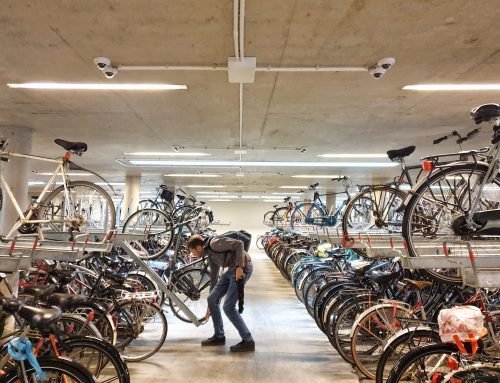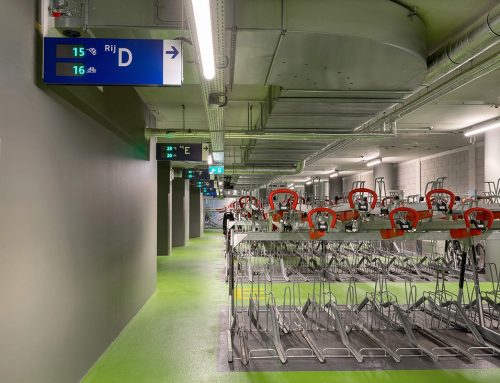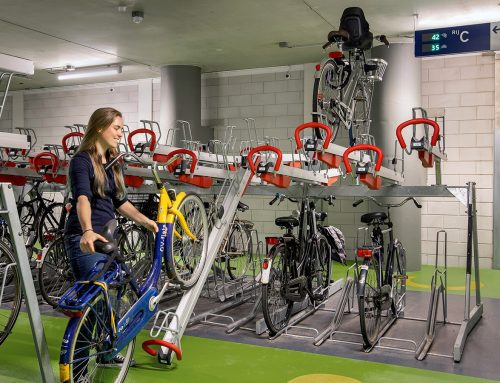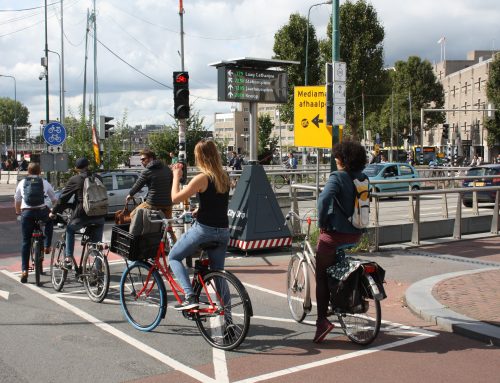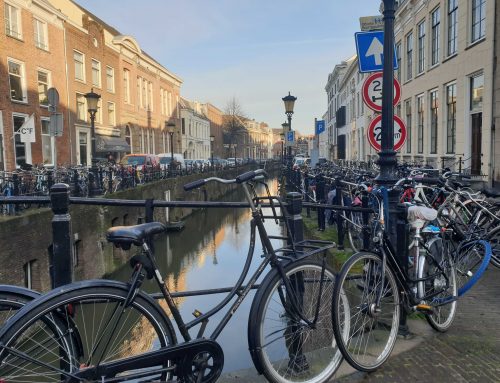Imagine yourself having a drone capturing the city from above what would you see? A wide range of dynamic motions of people, cars, bicycles, and vehicles. A giant network of moving elements on a grey surface. To connect all these elements, you need data about each component, therefore, data is the main tool to have a more sustainable mobility organism.
As mobility is the blood of cities, data has become crucial for our movements. We need to have constant access to real-time data to make the proper moves at the right time. Municipalities do efforts to provide tools that facilitate people’s daily life and give them access to up-to-date mobility data. For example, Amsterdam residents are not anymore keen on owning a car or a bicycle but they care more about having constant access to transportation means whenever needed. To accomplish this, innovation and research are working hand in hand to come up with new ways to give people the ultimate freedom of mobility.
Thus, a huge transition will be happening with mobility data within the next 10 to 15 years. With the urbanization increase by 30 per cent over the coming decade. Simultaneously, urban planners and inhabitants are working hard to achieve a more efficient shared mobility system that reduces traffic congestion and make cities more livable and sustainable.
After observing certain metropolitan areas, researchers proposed the following three models predicting the future of mobility:
Zero Ownership-Zero Emissions: The main goal of this model is to stop the negative impact of growing urbanization on cities especially those cities with primitive infrastructure, traffic congestion and high levels of pollution. This happens due to a system based on private cars and fewer pedestrians that leaves behind nothing but crowded streets and grey sky. In those cities, the ultimate solution is lower utilization of private cars, more shared mobility means and widely extended public transit networks. If developing countries followed this strategy, data generated from the shared transportation means will be so high compared to the ones from private vehicles.
Advanced Technology: cities try to adapt to the urban sprawl consequences in ways that are not sustainable. They could build wider streets and more bridges, however, the future of those cities will not be as they seem. Technology could intervene with congestion to help in creating better sustainability. Self-driven cars, digital signages, mobility sharing systems and an efficient transit system that is connected to mobile applications will give their fruit by time. The example of Los Angeles that which is a car-based city that costs $23 billion a year is significant proof that a profound shift should be implemented in terms of mobility structure.
Seamless Mobility: in such a model, all transportation modes are blurred in a sustainable way that fits consumer’s needs. It is a mixture of self-driving and shared vehicles accompanied by a highly advanced public transit network. The autonomy and development of this model will never happen without smart platforms operated by customized software to achieve mobility as a service and have a multimodal transport system. We find this modal predominant in developed cities for instance London, Singapore and Amsterdam.
According to McKinsey & Company Insights, from 20 to 50 per cent increase in travelers will occur with a seamless mobility system but car ownership will stay the same or a bit less as mostly car sharing will be arising.
In the three models, data considered the principal tool for the creation and operation of the model in a highly efficient way. Investing more money into real-time signs, mobile applications, smart mobility platforms and vehicles detectors has become a necessity side by side with sustainability and livability of cities.
Sources:
https://www.amsterdam.nl/en/policy/policy-innovation/smart-mobility/



